 |
| Drying Apricots in Southern California–early 20th century style. |
Dehydration is one of my favorite food preservation techniques. Drying food concentrates flavor and is a traditional technique in our Mediterranean climate. Best of all, drying food is one of the best applications for low-tech solar power. In many places, you can simply set food out under cheesecloth to dry in the sun.
But there’s a catch to sun drying: humidity. Food dries best when temperatures are above 85º F and below 60% humidity. If you live in a desert, humidity isn’t a problem. But in most other places in North America it’s simply too moist to set food out under the sun. It will rot before it dries. In Los Angeles, due to the influence of the ocean, it’s slightly too humid most of the year for sun drying to work well.
But there’s an easy way to overcome humidity: convection, i.e. hot air rises. Most solar dehydrators take advantage of the passive movement of hot air to lower humidity enough to dry food. Here’s a couple of solar dehydrators that harness this simple principle to dry food without electricity:
Appalachian Solar Dehydrator
This is the dehydrator I built with plans from Home Power Magazine. The plans and an improvement on the original plans are split between two articles in Issue #57 and Issue #69. You need to download and read through both articles before building this dehydrator. This dehydrator has performed well for us. The same design can also be modified to work as a rudimentary solar house heater. I had originally used a sheet of plastic over the collector, but have sinced replaced that plastic (which ended up spltting) with a door I was getting rid of.
Cardboard Box Dehydrator
Mother Earth News has plans for a Appalachian style dehydrator made from cardboard boxes. As long as you keep it out of the rain, this dehydrator should work just fine, and is a lot easier to make than the plywood version. I’ve never built one of these, but am interested in hearing from anyone who has.
Eben Fodor Solar Food Dryer
 |
| Photo from Simply Resourceful |
This design is by Eben Fordor, and is described in a book by Fodor called The Solar Food Dryer: How to Make and Use Your Own Low-Cost, High Performance, Sun-Powered Food Dehydrator. I have not seen one of these in person, but the folks at Simply Resourceful built and blogged about their Fodor style dryer. If you’ve got a Fodor dryer, please leave a comment to let us know how it worked.

Solar Tunnel Food Dryer
Beware of Bugs
One drawback to outdoor drying is that you can often get infestations of flies and pantry moths. We’ve lost a lot of dehydrated tomatoes this way even though our Appalachian dryer has screens. I’ve even lost batches I’ve done in an electric dehydrator inside. Thankfully it’s easy to kill larvae by sticking your dried food in the freezer at 0ºF for 48 hours. I’d recommend this step.



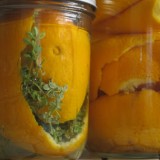
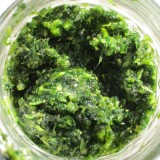
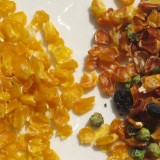
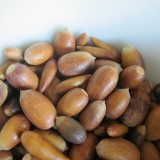

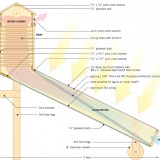
I’ve used my solar oven to dry herbs but never food.
Had to prop the glass door open about 1/2″ for a short time to get rid of the condensation.
Have never tried this, but have seen this hint many places including Mother Earth News – put food on screens and place in a closed vehicle that is in the sun, turn food & rotate trays as needed. Seeing as how hot a vehicle will get in full sun sounds like it should work.
Have tried it with figs
I live in Florida and our cars are extremely hot so the figs dried very quickly! I needed to run my daily runs in the car and left the racks in the back window! looked funny but it worked!
I prepared the fruit just like you would with any fruit drying process.
As I read, I was screaming in my head, “But, what about flies and ants?” You finally got to that issue. Flies that sit on feces and then on food can carry E.coli. Freezing will not kill E.coli. It only stops the progression. Once the food comes from the freezer, the organism continues to multiply. So, freezing will kill all stages of pantry moth and larvae, but not E.coli that can be in the larvae or already infecting the dehydrated foods.
Heat kills E.coli. But, slowly heating food just increases the resistance of E.coli bacteria. Read this: http://www.ars.usda.gov/is/pr/1998/980731.htm
I was told by elderly women to heat an oven to 200 degrees and put dehydrated food in the oven for 30 minutes. They did not tell me to put the food in the oven and bring it up to 200. Now, I know why. By the way, this was 30 years ago and the elderly women were my age….grrrr.
I was a vendor in a local craft show. Buying food is always good. I was losing weight swiftly, so I bought a quart bag of dehydrated peaches and ate on them through the day. The next day I resumed munching steadily the peaches.
After about two hours of eating them on the second day, I looked into the bag to find it full of maggots, some on the piece in my hand. this mass of moving larvae on my food horrified me so that I screamed, dropped the bag and was doing the stomping, head-shaking, hand-flapping, moaning bit. I was so upset and took them back. Then, the woman was upset.
This is the occasion where I learned about the heat. The women told me that when food was dehydated outdoors (in their youth) that flies covered the cloth they put over the food and some got onto the food. They just brought it in when hydrated and heated it in an oven. GAG! But, they did kill any E.coli present.
The woman who sold me the dehydrated peaches said she had had them frozen for months, and she thought that would kill anything. NOPE!
While owning an electric Excalibur dehydrator, during the summer make the dog’s beef/poultry jerky in an old Ronco black plastic dehydrator with its electrics removed. It sits in the sun in an aluminum baking pan. Fine screening covers both the top and bottom openings. While the Excalibur does the job in a few hours, the “solar” takes two full days of good sun. three if we’re having cloudy-ish weather. have never had a problem with maggots, flies, or other creatures in the dry meat which sits in a recycled container. have had pantry moths get into the dried food in the house, so have to be careful how I store it. Fruit takes too long to dry this way; gets moldy before it dries. Herbs dry very quickly.
What about a car parked in the sun? Unorthodox, yes. But you can keep out bugs and moisture easily. My partner dried some apples this way by placing them on a cookie sheet on the dashboard and they turned out quite good.
I’ve heard about doing this but never tried it myself. Thanks for the tip and report!
Thanks for this post! I love the idea of drying food with the sun! I have added this link to my page on drying apples.
thisladyshouse.com
Did you know that leaving bottle water in a plastic bottle out in the sun for at least 6 hours will kill off all bacteria and bugs. Found that some villages in Africa do this. Solar radiation does the trick. To use a glass bottle make sure the UVA rays can penetrate. This will ease the fear of bugs and bacteria. I tried a test with my car glass with the solar beads that change collars with the UVB rays so I knew the bacteria was burned up along with bugs! The beads can be purchased on line. Have fun!
Pingback: Unique Tips On How To Dehydrate Your Food Using The Sun